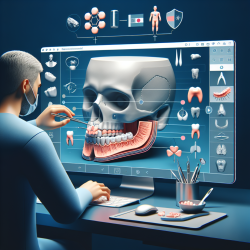As a practitioner working with children who have craniofacial anomalies, staying informed about the latest research and management techniques is crucial. The recent comprehensive review titled Management of a Rare Tessier 30 Median Mandibular Cleft Anomaly: A Comprehensive Review provides valuable insights that can enhance your practice. Here are some key takeaways and suggestions for implementing the findings into your therapeutic approach.
Understanding Tessier 30 Median Mandibular Cleft
The median mandibular cleft (MMC), also known as Tessier 30, is a rare craniofacial anomaly involving a cleft of the lower lip and mandible, which may extend to the neck. Unlike more common craniofacial anomalies, the literature on MMC is scarce, making comprehensive reviews like this one essential for practitioners.
Key Findings and Management Strategies
The review highlights several important aspects of MMC, including its embryonic origin, clinical presentation, and the need for a multidisciplinary approach to management. Here are some actionable points for practitioners:
- Early Diagnosis and Multidisciplinary Approach: Early diagnosis, preferably during the prenatal period, is crucial. Utilize ultrasonography and ensure a thorough clinical and radiological examination post-birth. A multidisciplinary team including pediatricians, orthodontists, surgeons, and speech therapists is essential for comprehensive care.
- Airway Management: Securing the airway is a top priority due to potential respiratory obstructions. Endotracheal intubation or elective tracheostomy may be necessary.
- Feeding and Nutrition: Infants with MMC often face feeding challenges. Use specialized feeding techniques and devices to ensure adequate nutrition until surgical repair is feasible.
- Surgical Interventions: The review suggests a trend towards early and single-stage surgical repair for better growth outcomes. Soft tissue repairs, including lower lip and tongue corrections, should be performed as soon as possible, followed by hard tissue repairs involving the mandible.
- Orthodontic and Speech Therapy: Post-surgical orthodontic treatment is crucial for correcting malocclusions and ensuring proper jaw development. Speech therapy should be initiated early to address any articulation issues resulting from ankyloglossia and lip incompetence.
- Psychological Support: Providing psychological support to both the child and their family is essential. Regular counseling sessions can help them cope with the challenges associated with MMC.
Encouraging Further Research
While the review consolidates existing knowledge, it also highlights the need for further research, particularly in validating newer innovations such as the use of bone morphogenetic proteins (BMPs) and resorbable reduction plates. Practitioners are encouraged to stay updated with ongoing research and consider participating in clinical studies to contribute to the growing body of knowledge.
By implementing these findings and remaining committed to continuous learning, practitioners can significantly improve the outcomes for children with MMC. To read the original research paper, please follow this link: Management of a Rare Tessier 30 Median Mandibular Cleft Anomaly: A Comprehensive Review.










